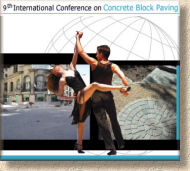ICCBP 2009
The 9th International Conference on Concrete Block Paving from October 18th to 22nd took place in Buenos Aires, capital city of Argentina, and 25 hours away from hub-of-the-universe, Warrington, by 'plane. I wasn't looking forward to the three-plane flight via Noo Yoik and Hoooston, but that was a doddle compared to my first full day in the city.
The conference was to open mid-afternoon, so after sleeping for a solid 11 hours to recover from the flight, I decided to explore a little bit of the city. That Evita woman's mausoleum in the Cementario Recoleta was just across the road from my hotel, so it seemed rude not to go and take a peek. I know less than buggerall about musicals, but asked to name half-a-dozen famous Argentineans, in common with most of us living in Britain and Ireland I would struggle to come up with three: the writer Jorge Luis Borges, that lying, cheating, podgy footballer with the coke habit and the Evita woman. How culturally bereft we are!
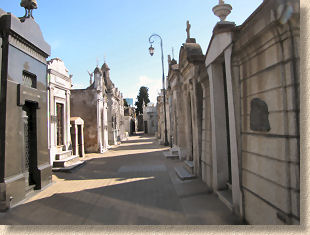
From the freaky mausoleum down to the Estacion Retiro, which the guide book proclaimed to be one of, if not the best railway station in South America. It didn't mention it was a den of iniquity and hotbed of pickpockets. The thieving git who surreptitiously opened my backpack while I was wearing it and made off with the aforesaid hit-and-miss guide book, along with my cod liver oil tablets and the USB cable for my phone must have had a real rootin' tootin' night with his ill-gotten gains. I should be grateful that his incompetence caused him to miss the passport and the video camera.
Having learned my lesson, and with a newly acquired mistrust of anyone and everyone around me, I headed off for the tourist area to be harassed by dodgy-looking money changers (they change your money into worthless slips of paper freshly churned out from the computer printer that very morning) and pesky shop assistants trying to herd you into their particular emporium of delights simply because you stopped outside for a nano-second to adjust your socks. It's not as tacky as some tourist areas in other cities, but the lingering suspicion following the pick-pocketing incident rendered it a particularly unenjoyable experience, so I beat a retreat to McDonalds, the only place that seemed to offer safe harbour in a sea of deceit.
Eventually, I summoned up the courage to make it to the Sheraton Hotel and Convention Centre and claim the customised neck garland that would grant access to the proceedings over the next four days.
The conference was officially opened by our cordial host, Timoteo Gordillo, Executive Director of the Argentine organising committee, and first up was the never less than entertaining Dr Dowson to regale us with a rambling history of CBPs. Harking back to the earliest days of the estimable Mr Taylor and his paving at Euston Station in the mid 19th century, right up to the re-paving of the same place almost 150 years later.
A break and then another reliable presenter with the unmistakable vowel sounds of John Cairns, Sarff Effrika's leading proponent of all things CBP. John flew through an all-too short exploration of permeable paving, its development, its current status and what the future holds. This was one of those rare presentations that disappoint only by coming to an end. I'd quite happily sit there listening to Professor Cairns talking for the rest of the day.
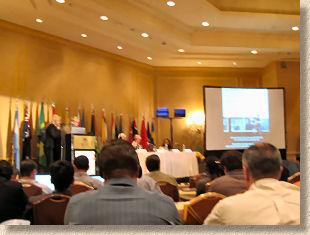
A break and then the first real taste of Latin America in the effervescent shape of Columbia's Germàn (pronounced Herman) Madrid and his dissection of the use of CBPs in public areas and, in particular, his examination of the use of CBPs in what might be considered as the recovering city of Medellin. Renowned for all the wrong reasons, especially its sullied involvement with the Columbian Marching Powder, the city has been working damned hard to shake off its shady past and re-invent itself as a vibrant, proud, Columbian city for the 21st century, and block paving has played its part in that rejuvenation. Germàn takes some ribbing from other established speakers at these conferences, but the man's passion for his trade, his country and his block paving is an example to us all.
To round off this first day, Germàn's compatriot, Dr Lina Montoya further explored the way in which inspirational CBP design and installation has revitalised a city that many had written off as a basket-case. Even after being mauled in translation, her passion and affection for the city of Medellin is exceeded only by the incomparable Germàn, and her exposition of how innovative CBP design, and the use of colour, has given the city a genuine future is a fantastic example of how strong leadership and well-considered social engineering can turn around a city. Are you listening, my beloved Liverpool?
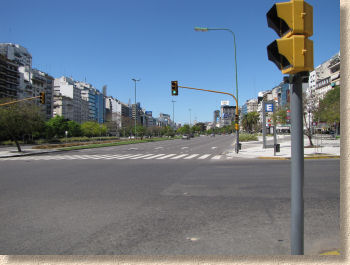
Off back to the hotel, and a second encounter with the seemier side of life in Buenos Aires, once proclaimed as the safest city in South America. While waiting to cross the final seven of the nineteen lane super-highway that is the Avenue 9th July , some lowlife scum decided to mug me for my camera. However, in yet another example of Argentinean scumbag mentality, the dozy git hadn't noticed that the camera was lashed around my wrist. He'd just seen an overweight, disabled tourist on his own and thought: "easy pickings".
He probably wasn't thinking that a few second later when the thumb notch of my cherrywood walking stick burst open the side of his thieving scumbag face, and again a couple of seconds later when the shaft whipped across his thieving scumbag legs, he seemed to have second thoughts and fled across the highway at double quick limping pace. I'd like to take this opportunity to thank the three Argentinean people at the same pedestrian crossing and the innumerable motorists stopped at the lights for not interfering in my personal struggle to repel the forces of darkness. I'm sure that, had you stepped in to help in any way, it could only have made matters worse. It's much better to let the disabled, distressed visitor to your country fight his own battles.
So, shaken, cut and bleeding, I hobbled back to the hotel, locked the door behind me and spent the rest of the evening having dark thoughts about the people of this city and the country in general. I've worked and played in Toxteth, in Moss Side, in Avenham, and despite the social problems and low-level scumbaggishness of these places, I've never known a disabled person be attacked.
Monday October 19th
I wasn't keen on leaving the hotel room on Monday morning, A huge part of me was wanting to stay safe, locked in my hotel, living off room service if necessary until the plane back home on Thursday, but to do so would be to award a minor victory to the thieving scumbags. Only by going back out there and showing them (but mostly myself) that I wasn't intimidated, could I salvage any sense of worth from this trip.
So I took a taxi to the conference hotel.
The honour of opening the first full day of the conference fell to Steve Coupe of Formpave , and he used his first slot to run through research on the effect of evaporation from permeable pavements and the potential for loss of water. Using a test site in a very attractive part of northern Spain, where they have wet winters but hot summers, his team have shown that, by using a double-skinned geo-textile, evaporation could be all but eliminated and so the potential for harvesting is unimpeded.
William Hunt for the USA has been looking at the behaviour and water quality of four differing permeable pavements; CBPP with 8.5% voids and CBPP with 12.9% voids; grid pavers, by which he means the pre-cast concrete grass blocks we see used in Britain and Ireland; and a pervious CBP, the type where water passes through the block.
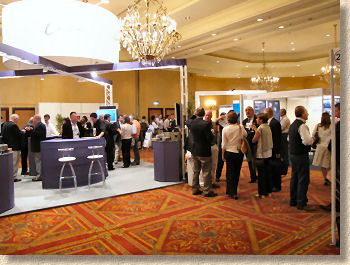
Steve Coupe returned for his second address, this time focussing on the revolutionary geo-thermal paving system launched by Formpave in the spring of this year. At this stage, he discussed research into the effect of temperature on water quality in such a system. There had been concern that by warming the groundwater, this could prove to be a breeding ground for bacteriological pathogens such as E. coli. Thankfully, the experimenting has shown that there is no adverse affect on water quality.
Break for a rather expensive (by Argentine standards) piss-weak cup of alleged tea and then back to hear Group MD, Stephan Steffen describe the co-operative principals and history of the renowned SF-Kooperation Group. This was probably the most commercial of all the papers this week, but it was valid in that it portrayed how progress in technology can be achieved through multinational co-operation, a potentially desirable model for the burgeoning CBP industry in South America.
David Hein made the first of a series of appearances during the event with an assessment of life-cycle costing of pavements in North America. Sometimes, David can speak so quickly that his naturally easy-on-the-ear Canadian burr can be hard to keep up with as he rattles out ideas at machine gun rate, but in general, what he has to say is well worth listening to.

David Smith is the leading light of the North American ICPI trade association which embodies contractors, manufacturers and educators. He gave a concise overview of the training regime in his part of the world, where they've put 18,000, yes eighteen thousand, paving installers through their certified training program since 1995. That's an average of over 1,250 per annum: last year, in Britain, we had a total of 15 contractor days on approved courses and this year we'll probably not even match those shameful figures.
The ICPI has just published a bloody impressive 160+ page training manual and David was kind enough to give me a copy, which has made for enthralling and very envy-engendering reading on the journey home. I know the set-up in North America is different to the politically poisoned situation we have in Britain, but there is no valid reason why training on this side of the Atlantic can not be as good as that offered over there. It just needs political will and the maturity to look beyond the personal fiefdoms that plague our trade.
John Knapton , along with quite a few other Brits, had an entertaining journey to Buenos Aires with an unexpected lay-over in Brazil which meant they didn't arrive until four in the morning, and so the paper managed by John had been postponed from its intended opening slot to this mid-morning position in order to give the parties concerned a chance to wipe the sleep from their eyes. And when you consider that the two main presenters are just 17 years old, you can understand why they were afforded the opportunity of a couple of extra hours in bed – those of you with teenagers in your life will know from painful experience just how hard it can be to get the buggers out of the bed when they've not had enough kip.
Ross Campbell and Joshua Smith from Rainey Endowed School in Magherafelt, Northern Ireland, had won a trip to BsAs (see how I'm slipping into the local lingo!) by submitting what John had determined to be the best paper on the lessons learned from the installation of permeable paving to their school playground/car park, as reported previously on this website. Their maturity in presentation, and their easy articulation when answering questions would be enough to warrant their presence at this conference, but when you look at the quality of their research, undertaken and written-up by what we used to call 6th Formers, they are a true credit to their school, their town and their country.
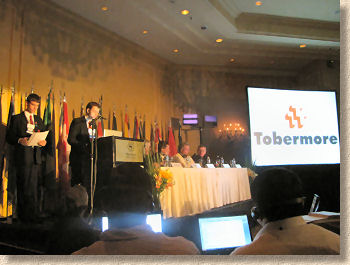
Tobermore Concrete Products , who supplied the paving and Professor Knapton, could have presented this as a typical conference paper, but by intimately involving the students, they've reminded the academics and technicians at the conference of how much fun science can be, and they've got the message of permeable paving out to a much wider audience: pupils, teachers, parents, local tv viewers and now the whole world. This was the showpiece of the conference, without doubt.
The final session of the morning followed a distinctly South American feel, with papers from Argentina, Peru and Colombia regarding how block paving has acted as an instrument of change for rural societies, with Arturo Noriega noting that women made better workers than the menfolk in his part of Northern Peru. You might be able to say that sort of thing in Peru, but not in Europe or North America!
Four continents straight after lunch, crossing the Atlantic Ocean to start with Sarff Effrika's John Cairns and his plug for the World Cup taking place there next year. He also made passing mention of the new testing standards for pavers that have been introduced recently.
Cross another ocean to Australia, by way of Germany, and you have Dr Marcus Oeser with his finite element model of pavement deformation. Too damned clever for my simple mind, especially so soon after lunch.
Cross the Pacific next to Canada and Pascale Pierre who suffered slightly by having the strongest accent ever heard outside a Pink Panther film. Pascale's paper on pavers in her native northern Quebec was completely lost on me – I sort of think I know what she was discussing, and I really don't want to criticise anyone for having a go in a non-native language, but I'll have to wait for the paper to be officially published to see if I was right.
Finally, down the Atlantic coast back to Argentina and Alejandra Benitez's paper on flexural strength testing of blocks in that country.
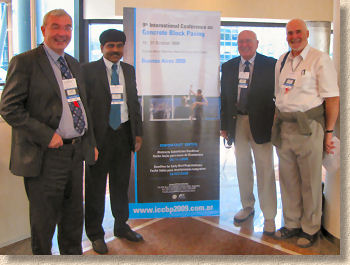
One last session before home time, and a look at what we might call 'heavy duty' applications. Argentina's Timoteo Gordillo went first with a look at how CBPs had been used on rail crossings, followed by Israel's Ilan Ishai looking at the use of blocks with a tram system. John Knapton steadily steered us through the new edition of the British Ports Authority's updated design manual , and John Emery flew through a review of aircraft pavement methodologies. Juan Grenada steered a course around ports in the southern Argentine province of Patagonia, and all was bundled up in a nice convenient package with Alastair MacLeod and John Howe presenting a joint paper assessing the performance of block paved container terminals around the world. John also revealed that his new employer, Brett , have a specialised jointing sand with angular and sub-angular grains. No news on when we'll see it available 'off the shelf' but the fact that someone on the supply side, at long last, is doing summat about the appalling use of unsuitable jointing sands in critical pavements is bloody good news.
Tuesday October 20th
Tuesday morning begins with a stellar line-up discussing sustainability, allegedly. However, the first two papers outline the different approaches used in North America and Australia to produce design software for permeable paving. The North American model, presented here by Canadian DJ Swan, is admittedly very North American based, relying on US/Canadian soil definitions and ASTM classification for sub-base materials, while the Australian model outlines by Prof Brian Shackel focuses on three key design aims relating to the water collected and discharged: quantity, quality, and the potential for harvesting, while allowing for the demands of trafficking. The NA model has been used only on that continent, whereas the Australian option has been tailored to meet the requirements of the South African market. As a non-specialist, I suspect the best solution lies somewhere between the two.
This was followed by a couple of papers from Japan, with Keiji Tomaru revealing a clever use of household waste, which is incinerated, reduced to ash and then used to create a so-called "eco-cement" and/or a sand-like aggregate, which, when combined, can comprise up to 50% of a block paver. Just think: your takeaway containers and vacuum emptyings could end up as paving blocks! Yutaka Ando revealed some research showing how a typical permeable block pavement can have a significantly beneficial effect on the problem of 'heat islands' within our towns and cities, a problem that seems to cause many sleepless nights in Japan, as heat islands were the subject of several papers presented by Japanese delegates at the 2006 conference .
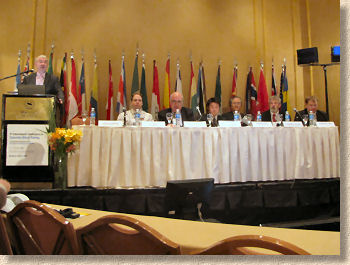
Charles Taylor, a Chicago-based contractor, gave an illustrated lecture on the installation of a permeable "parking lot" (as they call them) at an educational institution, showing photos of how the construction took place, how various SUDS structures were integrated into the overall design, and how the massive permeable pavement had actually reduced the incidence of basement flooding in private houses bordering the site.
Finally, Formpave's Steve Coupe gave an overview of the aforementioned geothermal paving system developed by the company. The idea was launched in Britain earlier this year but this was, I suppose, the major international launch of what is a very clever idea. I understand the basic physics, the manner in which heat can be 'extracted' from the ground, but it still seems fantastical to me that a 3-bed house can be heated, and maintained at a fairly constant 25°C from just 50m² of damp driveway.
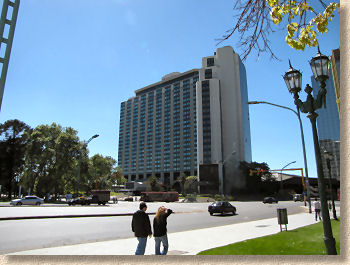
The second morning session concerned itself with codes and standards and while I wouldn't want to belittle their importance to the trade and to civil engineering in general, they don't make for the most enlivening of discussions. Canada's David Hein kicked off with a description of how they've produced a protocol for describing road maintenance condition, from "Shit! There goes my suspension!" all the way up to "It's like floating on air!". They don't actually use those terms, preferring the anonymity of a numerical system, but you get the gist of it.
David Smith returned to enliven proceedings with a lucid explanation of why bedding sands need tighter definition beyond the usual grain size and proportion. Some of us have long believed and argued that grain shape and the actual strength of those grains are critical, especially in heavy duty applications. This, at last, has been recognised in the latest edition of the relevant British Standard, and it's good to see the relevance is not lost on those in other parts of the world.
Etsuro Nado of Japan then took us through the revised edition of his country's installation standards. It was a brave effort given that English would not be his mother tongue – it's certainly better than my Japanese (or my any other language!) but it can be hard work for those of us not familiar with the intricacies of Japanese methodology.
Jens Meinheit from Germany then peppered up the proceedings by describing a construction method which uses a bitumen-bound sand in place of the more usual loose sand laying course. You can't really argue with the possible applications, where laying courses are prone to saturation for example, but bound laying courses have a raft of problems of their own, and I can't help feeling that there could be a case of robbing Peter to pay Paul.
Finally, back to David Hein. This time, he's telling us about the fun and games they've had in creating a North American standard for construction of municipal roads with CBPs. As the session moderator, Allan Dowson, had said, we all reach a point where we need to codify what we do, and while the US and Canada have had their standards for heavy duty applications, it seems strange that they are so late in reaching a standard for lesser highways and town roads.
After lunch, what has to be the driest session of the conference to date. If we're going to be battered around the head with complex equations and finite elements analysis, should we really do it after lunch, when most of the middle-aged men that make up the delegate body are more suited to a post-prandial nap than polynomial expressions?
Luckily, the ever-affable allegedly retired technical manager of Blockleys was able to ease us in with a gentle overview of embodied carbon in CBP pavements both permeable and impermeable. If we were to believe the media, we are all now obsessed with being carbon neutral. I know I can't sleep at night for worrying about the e-CO&sub2; cost of that last pint. Anyway, Ian, with his young apprentice, John Knapton, had put their heads together and compared the e-CO&sub2; of permeable and impermeable pavements and, in headline terms, found that impermeable came out with a lower 'carbon footprint', and, to put in on a human scale, your typical 80m² residential driveway will need 4 trees to 'capture' the equivalent carbon generated by manufacturing and constructing your new paving.
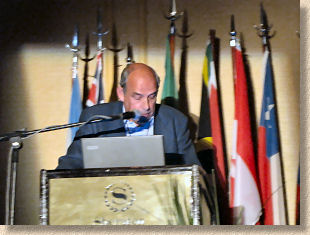
Michael Lazar from Singapore's Acme Paving Consultants then dazzled us with his paper on the use of reflective coatings and reflective pavers that outperform conventional thermoplastic marking systems. Based on glass beads incorporated within a special cementitious mix, the freaky thing is that these coatings and pavers become more reflective with time and have excellent resistance to abrasion.
Then the real head-spinner. TL Ryntachiang had travelled all the way from India to show how his simple cast in-situ paver system for use in rural areas had benefitted from finite element analysis that had enabled the development of a set construction models for various applications experiencing differing traffic levels and ground conditions. To be fair to Dr Ryntachiang, this is incredibly valuable work that will bring huge, life-changing benefits to remote, cash-strapped rural areas, but it's heavy going for a non-engineer so soon after lunch.
However, this was a walk in the park compared to the next paper, scheduled to be presented by Francisco Gomez from Columbia, but delivered by the ever-reliable Germàn Madrid in the absence of Dr Gomez. It was something about concrete and mortar mixes, but I'm not really sure what. That is largely due to the somewhat ambivalent translation: Dr Francisco was at first described as 'her' and then as 'him' and then 'her' again, and I ended up spending more time worrying about the transient gender of Dr Gomez than what it was that he/she would hope was being said in his/her name.
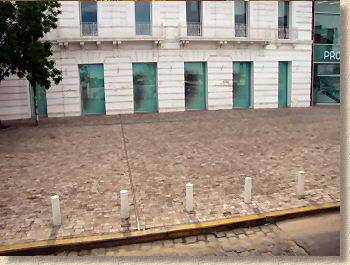
An extended break, thanks to the disappearance of two speakers from the previous session, and then back with the one and only Germàn Madrid with his proposal to create a multi-lingual thesaurus for the paving trade, so that when we in Britain and Ireland speak of "pavers", Timoteo in Argentina knows the subject is 'Adoquines de Homigón'. It's a noble effort, but I do worry about how he'll cope when we come to the more....errr....earthy terms the Brits have for mortar!
Shinobu Omoto from Japan presented a paper looking at why two pavements in Japan had performed so well over their respective lifetimes of 18 and 27 years, especially given that both are in heavy everyday use as a bus station and a taxi rank. By investigating the minimal damage incurred by each pavement, and comparing the conditions to those in damage-free areas, it has been possible to identify what works best if we want to ensure pavement longevity.
Johan Silfwerband explored three training programs in which he'd been intimately involved, two in his native Sweden and one next door in Norway. The training schools had been aimed at engineers, designers, highway managers and the like with the intention of promoting their understanding of the possibilities presented by block paving. Those lucky Norwegians got to enjoy an 11 day course, which included trips out to various sites to see for themselves the wonder of CBPs, but even with such extended learning opportunities, Johan acknowledges that much more needs to be done, and, in a private conversation later, told me that the opportunity for training of operatives in Sweden was even more lamentable than what we have in Britain and Ireland.
Argentina's Alejandro Benitez returned to regale us with the details of how the CBP manufacturing industry in her homeland has got its act together and instituted a validated certification programme to help improve standards in the country's emerging market.
The final session of the day looked at urban design, starting with Jan Knol from the Netherlands waxing lyrical about the design possibilities offered by CBPs and the positive impact they can have on communities. You have to give it to the Dutch: when it comes to flamboyant design for streets, they really do know how to throw a party!
Ilan Ishai revealed how Eilat, the Israeli version of Blackpool or Killiney, attractively perched on the northern tip of the Red Sea, had turned to CBPs as a paving solution for what is essentially a desert town where the unbearably hot daytime temperatures and chilly-by-contrast night-time dips have a seriously adverse effect on traditional asphalt or bitmac surfacing. By using CBPs, the town had not only extended the service life of its highways, but had reduced maintenance costs and got much prettier surfaces in the process.
To round off the day, Glecia Silveira appraised us of how the Brazilian city of Saó Paolo had made a concerted effort to redevelop its footpaths to render them accessible for residents, with defined 'service strips' for utilities and a minimum guaranteed width for pedestrians. The scheme has expanded to incorporate tactile paving, and has become part of a nationwide programme to standardise footpaths.
It can be difficult for us in affluent Western Europe to fully appreciate the massive amenity value of decent footpaths. Believe me: a couple of days in Buenos Aires will make you think twice before complaining about that broken flag near the newsagent's. In this city, an intact, pot-hole free pavement is the exception. The work being done in Brazil will be enormously beneficial to all of its citizens. I just hope the Portenós can follow the example!
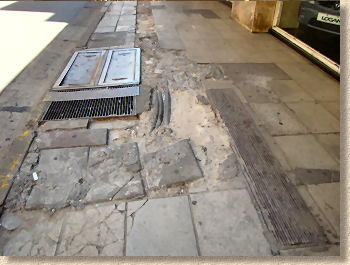
Wednesday October 21st
The last day began with a very lively upbeat session which John Knapton kicked off with a review of the trial panels constructed at Tobermore Concrete Products' HQ in Northern Ireland, where four different construction methods for permeable pavements were tested. Two panels had no stabilised base course, although one did have two layers of geo-grid, while the other two panels benefitted from a base course of dense bitumen macadam (DBM) or 3% added cement. Unsurprisingly, the stabilised panels performed best with much less deflection/settlement than the two unstabilised panels. However, the addition of the geo-grid had very minimal impact on the performance, and, as John says, while they did no real harm to the pavement structure, they didn't actually do much good.
Brian Shackel ran through an assessment program they'd undertaken on a series of Australian permeable pavements that had been in use for at least 8 years. Despite regular use and token or even non-existent cleaning/maintenance, all the pavements were demonstrably still functioning as intended. The research team did find that while clogging occurred on all pavements, it was most pronounced on 'wide joint' pavers in contrast to systems using drainage holes, but that almost all of the sediment and other debris was trapped within the upper 30mm of jointing material, making remediation, should it be considered necessary, a relatively simple task.
Anne Beeldens presented an overview of permeable pavement construction in Belgium, where minimal frosts but a damp climate presents challenges similar to those experienced in Britain and Ireland. However, Belgium has adopted slightly different specifications, most notably the use of a 0-32mm bedding layer compared to the 2-5mm material most commonly specified on this side of the North Sea. There are some limitations within the Belgian spec; the proportion of fine material is limited on heavier applications, a stricter grading envelope is required, but the good news is that the performance results are incredibly similar to those experienced in Britain and Ireland, which for me prompts further study of the role of the bedding layer in permeable pavements.
Last up in this first session was Dr. William Hunt from North Carolina, who revealed the trials and tribulations he had faced in convincing his state government that permeable paving was a “good thing” and that is was not, as the state regulators assumed, no different in terms of drainage potential than a conventional block pavement. Eight years and six major research projects later, the now-chastened regulators accepted that permeable pavements offered significant benefits and it is now part of state law that CBPP (or PICP as they refer to it over there) is a preferred paving option.
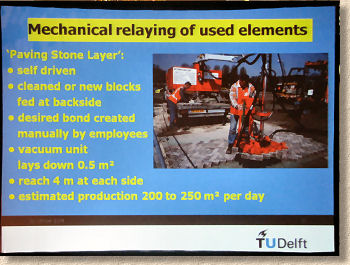
A coffee break and then Lambert Houben from Delft Technical University in the Netherlands gave a fascinating overview of laying techniques and the relevant Health and Safety legislation that is intended to look after the nation's dwindling stock of paving operatives. With a proper four year apprenticeship programme in Holland (more than twice what we've just enabled in England) competent paviors are in short supply, so those working in the trade need looking after. No areas greater than 1,500m² to be manually laid; no blocks heavier than 4kg or flags more than 9.5kg to be manually laid and a pro-active policy of promoting machine-aided installation. This is something that we're currently looking at in Britain, and I've asked Lambert to share his experiences so that we can benefit when we come to draw up guidelines some time next year.
The return of Marcus Oeser and more of his finite element analysis, work shared between Australia and Germany. No-one glazes over more quickly than I do at the mention of FE analysis, but the work being done by Marcus and his team is immeasurably important. In layman's terms, it will create a computer model that will allow engineers to design pavements to meet specific demands in terms of load capacity and performance while working with whatever materials are available locally. So, if you can't get 5-20mm CGA for your permeable pavement, but can get, say, 2-40, the model should be able to suggest a viable design.
From Japan, Dr Hosokawa examined the use of molten slag in paver production. This builds on the paper presented yesterday regarding how household waste can be turned into usable pavers, but goes further. When pavers have reached the end of their service life, they can be crushed and mixed with the furnace-produced slag which comes from burning all that waste to be re-used as an aggregate for second, third and even fourth generation pavers. In effect, Dr Hosokawa is postulating a 100 year lifespan for paver aggregate, four incarnations of 25 years. If that's not making the most of natural resources, I don't know what is!
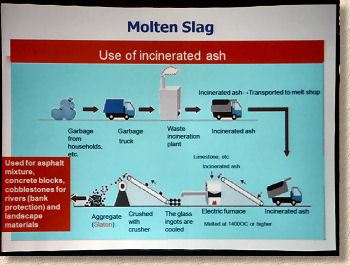
The final session before lunch and the final session of the conference opens with Canada's DJ Swan standing in for Susan Tighe and presenting her paper looking at the results from test panels of CBPs at her University's research facility. I think I must have missed something because my conclusion was that the research had proved that CBP pavements will deform when trafficked. There has to be more to it than that, surely!
A classic piece of Japanese science from Masahiko Nakamura followed. How do we quantify how smooth (or rough) is a pavement? Most investigations currently rely on subjective qualitative assessments but this proposal put forward a simple measuring jig which produced data on the relative levels of points on a pavement which can be fed into a straightforward-ish standard deviation evaluation to produce an objective quantitative value for the actual smoothness (or roughness). How come no-one thought of this before?
Claudio Herrera showed how the rejuvenation of tired asphalt roads in the Patagonia region of Argentina had proven to be a financially attractive option for cash-strapped local government looking for cost-effective solutions to a growing problem.
There's a rumour that the papers won't be published until next Spring on the grounds that providing immediate access negates the point of attending the conference itself. If you can download who said what along with all the pretty pictures and diagrams as soon as the conference closes, why would anyone travel halfway around the world? I can see the point but what about those of use that did travel halfway around the world and want to check a few details? At previous conferences, a CD-rom with all the presentation thereon has been provided to delegates, but not this time. Another strange thing was the 'Gala Dinner' on Wednesday evening, the traditional opportunity to wind down, let off steam and say goodbye to everyone. 120 US Dollars to attend, that's around 75 quid or 80 Euro, for which we got a finger buffet, a bowl of stew and a tango act. Sorry, but for me, 75 quid warrants a sit-down dinner.
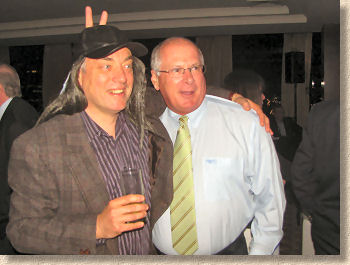



So: was it worth a 22,000 mile return journey? Time will tell, but I think there was a good balance to the papers presented, with some highly technical engineering theory being amply offset by personal narratives of how CBPs have improved the lives of people around the world. I'd still like to see more contractor input as we are the unheard voice at these events. Contractors have more personal contact, a more intense relationship with CBPs, than many of those present at this conference, but that experience is under-represented. I know it's a major undertaking for a contractor to fly half way around the world for a 12 minute speech, but to paraphrase Churchill, block paving is too important to be left to the engineers.
Only three British/Irish manufacturers present: John Howe for Brett, Steve Spikes for Formpave and David Henderson for Tobermore. It seems that the “bigger” manufacturers don't appreciate the importance of this event and prefer to stay at home, counting their beans. It's disappointing that an industry to which Britain has contributed so much in the way of research and technical development is so poorly supported by those who profit most. While the Germans from SF Kooperation and the Americans from Columbia Paving are busy forging links with emerging markets, too many of the Brits and Irish are tucked up safe at home, resting on their laurels. Great plan, lads!

